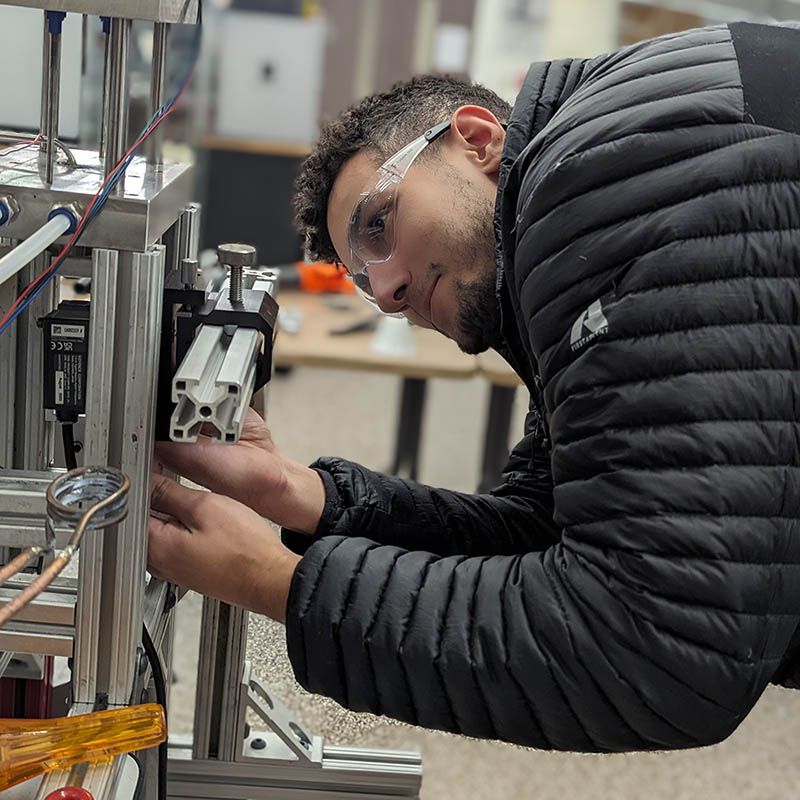Kareem Tawil: Multi-physics Simulation of Metal Droplet Jetting
Liquid metal jetting (LMJ) is a new technology showing promise for improved speed, cost, and safety of metal AM, thus opening the doors to broader industrial adoption.
LMJ is still a very young technology. MIE-PhD student Kareem Tawil, his advisor Denis Cormier, and a team of researchers at the RIT AM Print Center are working to improve current LMJ technologies. Kareem’s research focuses on understanding the fundamental physics underlying the processes of generating and depositing liquid metal droplets. Designing, building, and operating LMJ printers is currently a difficult and expensive task. To accelerate the pace of learning and discovery Kareem leverages multi-physics simulation. Modeling and simulation allows Kareem to explore different types of physics including fluid flow, heat transfer, melting and solidification, and much more. With the simple change of a parameter, Kareem can probe the most extreme ranges of LMJ and develop accurate and verifiable mathematical models. He then uses these models to improve and optimize the LMJ additive manufacturing machine being developed in the AMPrint Center.
The AMPrint Center’s prototype LMJ printer has successfully jetted tin, aluminum, copper, and other metals. The team plans to further improve the system utilizing both multi-physics simulation and physical experimentation to drive development.

LMJ is showing a lot of promise for enhancing the speed, lowering the cost, and increasing the safety of metal additive manufacturing.

